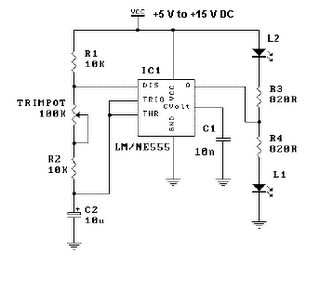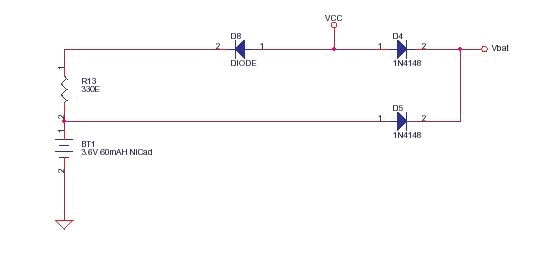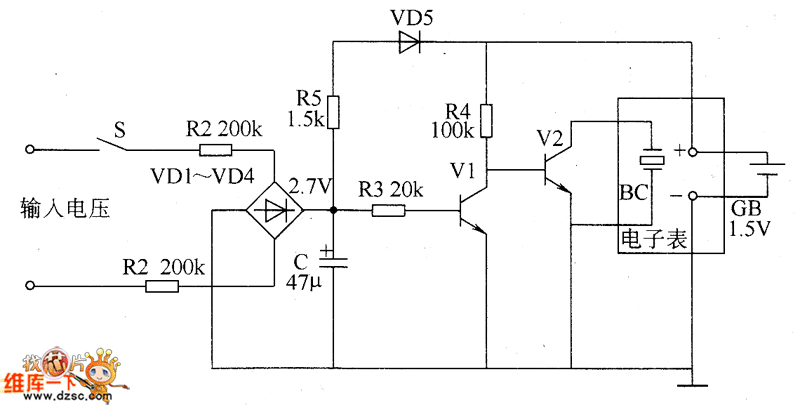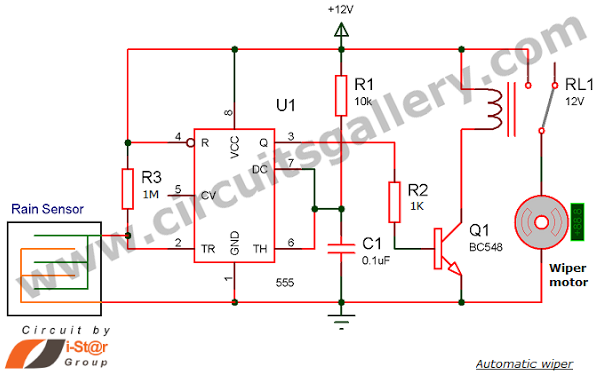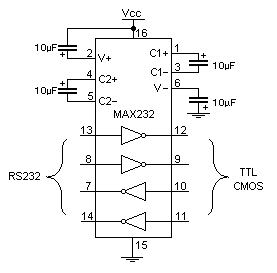
AT89C2051 Real Time Controller

This device is a long-standing controller for various home appliances, including night lights and air conditioners. It is a Miniature Real-time Controller that utilizes three primary components: an 89C2051 microcontroller, a DS275 or MAX232 level shifter, and a 74LS07 open collector driver. The device features a scheduler for managing the on/off times of six output channels, which can be programmed via a PC and stored in the on-chip RAM. Each output channel can provide a sinking current of 20mA, making it suitable for driving a homemade opto-triac or a large solid-state relay to handle heavy loads. The circuit diagram for the Miniature Real-time Controller is illustrated in Figure 1. The 89C2051 operates at a low-cost crystal frequency of 3.579MHz and runs the timer6.hex program. The six output channels are connected to pins P1.2 through P1.7, which facilitate current sinking. The 74LS07 open collector driver supplies a maximum of 20mA at 12V, appropriate for driving a homemade opto-triac as depicted in Figure 2. Two 1N914 signal diodes are included to provide a simple backup supply for the 89C2051. The reset function relies on a basic RC circuit, lacking brownout protection and a reset switch, which may lead to operational issues if the controller is powered by battery for an extended period. In such cases, removing and reinserting the battery is necessary. The RS232 level converter can be replaced with any suitable alternative, such as the MAX232 or a simple transistor-based circuit. An opto-triac with zero-crossing capability can be easily constructed; for instance, an MOC3041 has been used to drive a 5A, 240V triac. The night light predominantly utilized in the home is an incandescent lamp, and the described circuit functions effectively for this application. For heavier loads, such as air conditioners, a solid-state relay, such as the CRYDOM D2410, is employed.
The Miniature Real-time Controller is designed for versatility in controlling various household appliances through a microcontroller-based architecture. The 89C2051 microcontroller serves as the core processing unit, executing the timer6.hex program that allows for precise scheduling and control of the output channels. The six output channels are capable of sinking 20mA, making them suitable for interfacing with opto-triacs or solid-state relays, which are essential for managing higher power loads safely.
The RS232 communication capability, facilitated by the DS275 or MAX232, allows for easy programming and configuration of the device through a PC interface. This feature enhances user accessibility, enabling straightforward modifications to the operating schedule without the need for physical adjustments to the hardware.
The use of the 74LS07 open collector driver is critical for ensuring that the output channels can handle the necessary current levels while providing the flexibility to connect various types of loads. The implementation of two 1N914 diodes as a backup power supply for the microcontroller ensures reliable operation, even in the event of a power interruption.
The design also incorporates a basic reset mechanism through an RC circuit, though it is important to note the absence of brownout protection. This may necessitate manual intervention in cases of prolonged battery operation, highlighting the importance of incorporating robust power management features in future iterations of the design.
Overall, the Miniature Real-time Controller exemplifies a practical solution for home automation, combining simplicity, efficiency, and the ability to handle a variety of electrical loads. The integration of components such as the MOC3041 for zero-crossing control further enhances the device's capability to manage inductive loads effectively, ensuring smooth operation of appliances like incandescent lamps and air conditioners.This is my long history the device that controls my home`s night light, air-conditioner, etc. The device is a Miniature Real-time Controller. The circuit uses only three chips, a 89C2051, DS275(or MAX232), and 74LS07 open collector driver. The scheduler for time on/off of 6-channel output can be made by downloading from PC and saved into onchip RA M. Each output provides a 20mA sinking suitable for driving a homemade opto-triac or big solid-state relay for heavy load. A circuit diagram of the Miniature Real-time Controller is shown in Figure 1. A 89C2051 with a low-cost X-tal 3. 579MHz runs timer6. hex. The 6-channel output is P1. 2 to P1. 7 driving with sink current. A 74LS07 open collector provides approx. max 20mA @12V suitable for driving a homemade opto-triac shown in Figure 2. Two signal diodes, 1N914, provide simple backing up supply for the 89C2051. Since RST uses simple RC circuit, there is no brownout protection and reset switch thus when the controller operated with battery for long time, the chip may knock.
Simply take the battery out and put them again. The RS232 level converter, instead of DS275, any converter may use, say MAX232, or simple circuit using two transistors. An opto-triac with zero-crossing can be made easily. I have used an MOC3041 to drive 5A 240V triac. A night light used in my home mostly be an incandescent lamp, the circuit below works fine. For such heavy load as air-conditioner, I used a solid-state relay, one from CRYDOM D2410, say. 🔗 External reference
The Miniature Real-time Controller is designed for versatility in controlling various household appliances through a microcontroller-based architecture. The 89C2051 microcontroller serves as the core processing unit, executing the timer6.hex program that allows for precise scheduling and control of the output channels. The six output channels are capable of sinking 20mA, making them suitable for interfacing with opto-triacs or solid-state relays, which are essential for managing higher power loads safely.
The RS232 communication capability, facilitated by the DS275 or MAX232, allows for easy programming and configuration of the device through a PC interface. This feature enhances user accessibility, enabling straightforward modifications to the operating schedule without the need for physical adjustments to the hardware.
The use of the 74LS07 open collector driver is critical for ensuring that the output channels can handle the necessary current levels while providing the flexibility to connect various types of loads. The implementation of two 1N914 diodes as a backup power supply for the microcontroller ensures reliable operation, even in the event of a power interruption.
The design also incorporates a basic reset mechanism through an RC circuit, though it is important to note the absence of brownout protection. This may necessitate manual intervention in cases of prolonged battery operation, highlighting the importance of incorporating robust power management features in future iterations of the design.
Overall, the Miniature Real-time Controller exemplifies a practical solution for home automation, combining simplicity, efficiency, and the ability to handle a variety of electrical loads. The integration of components such as the MOC3041 for zero-crossing control further enhances the device's capability to manage inductive loads effectively, ensuring smooth operation of appliances like incandescent lamps and air conditioners.This is my long history the device that controls my home`s night light, air-conditioner, etc. The device is a Miniature Real-time Controller. The circuit uses only three chips, a 89C2051, DS275(or MAX232), and 74LS07 open collector driver. The scheduler for time on/off of 6-channel output can be made by downloading from PC and saved into onchip RA M. Each output provides a 20mA sinking suitable for driving a homemade opto-triac or big solid-state relay for heavy load. A circuit diagram of the Miniature Real-time Controller is shown in Figure 1. A 89C2051 with a low-cost X-tal 3. 579MHz runs timer6. hex. The 6-channel output is P1. 2 to P1. 7 driving with sink current. A 74LS07 open collector provides approx. max 20mA @12V suitable for driving a homemade opto-triac shown in Figure 2. Two signal diodes, 1N914, provide simple backing up supply for the 89C2051. Since RST uses simple RC circuit, there is no brownout protection and reset switch thus when the controller operated with battery for long time, the chip may knock.
Simply take the battery out and put them again. The RS232 level converter, instead of DS275, any converter may use, say MAX232, or simple circuit using two transistors. An opto-triac with zero-crossing can be made easily. I have used an MOC3041 to drive 5A 240V triac. A night light used in my home mostly be an incandescent lamp, the circuit below works fine. For such heavy load as air-conditioner, I used a solid-state relay, one from CRYDOM D2410, say. 🔗 External reference
